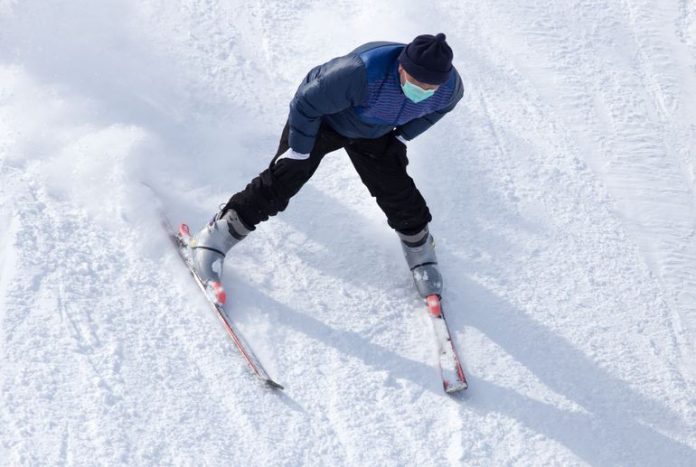If you want to ski a lot in the winter you need to get the most out of your skiing dollar. You also need to drink a lot of fluids during the day.
Here are three tips to save you money so you can ski more often and keep yourself hydrated at the same time.
Carry Your Own Water
When you downhill ski for an extended period of time, you have a tendency to sweat a lot. Not necessarily out of fear, but because you are working hard.
Sometimes, you can drop up to a quart of water per hour. The key is to hydrate before you get thirsty, and drink regularly throughout the day.
The best way is to carry at least two quarts of water with you. There is almost no cost associated with tap water that you bring from home, or that you get from the ski resort. Water is the best fluid to drink since our bodies are made up of 70% water.
On the other hand, bottled water gets very expensive since you need to hydrate a lot throughout the day.
Fruit juice and soda pop are not only costly, but are also diuretics that can make you even thirstier after you consume them, so you want to avoid these fluids.
So, it is wise for skiers to carry plenty of water with them when they are out skiing to avoid dehydration, and because there is no expense involved with tap water. How do you carry two quarts of water with you?
Bring a Backpack
When you are skiing in the mountains, it is best to wear a backpack. You can put the water you need in two X 1-quart plastic containers, along with your spare clothing and accessories.
After you get off the chair lift or when you stop for a break on the slopes remove your backpack and pull out one of the water bottles.
However, if you consider removing a backpack two or three times per hour to be a hassle or you find that the extra weight on your back adversely affects your skiing, it might be better to invest in a camel pack.
Get a Camel Pack
A camel pack is actually a vest that fits around your chest and is zipped or clipped in the front. The pack contains a reservoir that holds between one and three quarts of water or energy drink, as well as a tube that transports the fluid from the reservoir to your mouth on demand.
The pouch runs from the upper to the lower back and distributes the load evenly over your backside.
Some hydration packs in the marketplace come equipped with a system that prevents the delivery tube from freezing up in the winter months, but more often than not it is an accessory that needs to be purchased separately.
However, if you tuck the end of the tube inside your ski jacket you should be able to keep it from freezing up on most winter days.
There is an initial investment for the pack, but you will recover this cost in one ski season by not buying bottled water, pop, and juice.
In addition, you can use the camel pack for other sports like inline skating, hiking, and cycling to keep yourself hydrated during these summer activities.

